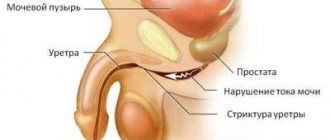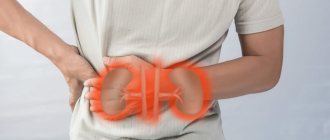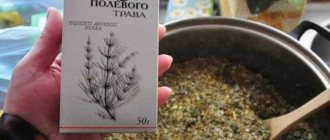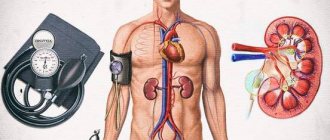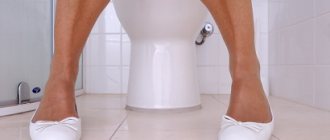06.08.2017
Urolithiasis is a pathology that torments a person with acute pain, especially when the ureter is blocked by stones as they come out.
Small stones are up to 2 mm in size, which is why they are called sand. Sand is usually excreted in the urine without causing discomfort. But if you do not expel it from the kidneys in time, it will turn into large stones over time. Therefore, you need to know how to remove sand from the kidneys at home using folk remedies in order to take preventive measures in time.
Before using traditional medicine, you need to discuss treatment methods with your doctor and choose the safest herbal preparations. To choose the right folk remedies, you need to identify what the stones are made of. Kidney stones are divided into:
- urates (they are based on uric acid salts);
- oxalate, carbonate, phosphate (based on calcium);
- xanthine, cystine, cholesterol (compounds from amino acids, proteins and bacteria).
Before removing sand from the kidneys using folk remedies, it is necessary to identify not only the nature, but also the size of the stones. If it exceeds 3 mm, you cannot drink herbs that remove sand at home. Such stones can injure or rupture the ureter during movement.
If treating sand in the kidneys with folk remedies is accompanied by pain, you need to stop the course of treatment and consult a doctor. If you neglect these rules, the removal of sand from the kidneys will end unsuccessfully, in addition, negative phenomena will appear:
- ureteral obstruction;
- crystallization of salts, formation of stones, deterioration of health;
- injuries to the urinary organs due to sharp stones;
- blockage of the ureter with a stone, subsequently leading to kidney failure.
Complex treatment of sand in the kidneys
If a person has sand in the kidney, treatment with folk remedies at home is quite acceptable, if the state of health is normal, there are no indications for hospitalization. It is better to create a comprehensive treatment plan. First of all, the doctor will prescribe herbal medicines from the category of uroseptics and diuretics for:
- softening stones;
- reducing the level of calcium in urine sediment;
- improving kidney function;
- excretion of sand in urine;
- pain relief;
- elimination of edema.
Urolesan, Canephron, Cyston are recognized as the best herbal medicines for treatment. These medications can expel sand from the kidneys and are taken in tablets and drops. The duration of the course is determined by the doctor.
In addition to herbal medicine, a diet is prescribed. Its main principles are to avoid foods that irritate the kidneys, maintain a drinking regime and avoid alcohol.
Harmful foods that need to be removed from the diet:
- fried, overly salty and spicy foods;
- canned food, smoked meats, pickled foods;
- semi-finished products and by-products;
- store-bought desserts;
- broth of mushrooms and meat.
Soda and citrus juices are prohibited. Proper drinking regime is based on the consumption of clean water. This will make urination more frequent and abundant in order to more effectively flush out the sand in the kidneys.
As for the choice of diet, the specific diet depends on the chemical composition of the stones:
- Urates are easier to soften and remove if an alkaline environment is created in the body during treatment. To do this, nuts, vegetables, cereals, and fermented milk products are introduced into the diet;
- phosphate ones require urine acidification and limiting calcium intake. If you remove dairy products from the menu, you will reduce the calcium intake from outside. It is correct to eat fish, meat, and cereals;
- oxalate ones are dangerous because of their sharp stones. To remove sand from the kidneys, you need to lower the level of oxalic acid in the body. This means you need to remove rhubarb, sorrel, spinach and green salad from the table;
- proteins are not influenced.
Before you expel the sand, you need to stick to the diet for a while. This will help soften the stones and push them out. In addition, following the above rules will prevent the formation of stones in the future.
The essence of pathology
Sand in the kidneys is small crystals of salts that are not excreted in the urine, but settle in the tissues.
This can be facilitated by:
- poor nutrition;
- inflammatory kidney diseases;
- abnormalities of organ development;
- physical inactivity;
- dehydration of the body.
Depending on what salts accumulate, urate, phosphate and oxalate crystals are distinguished. The pathology is usually asymptomatic; when sand moves, minor pain in the lower back may occur.
However, the person needs to be treated, because later the sand forms stones. This manifests itself with more pronounced symptoms and impairs kidney function. Pathology is diagnosed using ultrasound (photo).
Pathology can only be detected using ultrasound
How to remove urate type sand
To choose an adequate folk remedy for sand in the kidneys, you can use one-component infusions and herbal mixtures from those listed below. The course lasts a month, after which there is a break for 11 days, then, if necessary, therapy can be continued:
- You will need dried birch and strawberry leaves, elderberry inflorescences, parsley, willow bark, rose hips and flax seeds. The listed ingredients are taken in equal parts, crushed and mixed. After this, take 10 g of raw material, place it in a container and add 250 ml of hot water. The infusion is kept under the lid for 2 hours, filtered and taken 3 times a day;
- You will need equal parts of corn silk, parsley and calamus root, strawberry and lingonberry leaves, a little knotweed herb and kidney tea from the pharmacy. All components are crushed, mixed and brewed according to the example of the recipe given above;
- you need to mix equal amounts of herbs: parsley, cinquefoil and knotweed. The same number of lingonberry and mint leaves, caraway berries and rowan berries are added to them. Grind and brew according to the recipe indicated above;
- infusion of knotweed herb. Grind the raw materials, pour 6 tbsp into a thermos. plants, pour a liter of boiling water and leave for a day. When the time comes, the infusion is filtered and drunk throughout the day;
- The infusion and parsley is easy to prepare - you need to chop the leaves and roots of the plant in equal parts, mix and pour boiling water in the proportion of 300 ml per 30 g of the mixture. The medicine is infused for 2 hours, after which it is consumed throughout the day.
The chosen remedy can be strengthened by including watermelon in the diet. It is advisable to choose berries without nitrates, then during the season you can consume several pieces per day, washing the kidneys.
Recovery prognosis
The result of treatment and the speed of recovery depend on the patient’s condition. It is necessary to establish an accurate diagnosis in order to select the most effective treatment.
The sooner patients consult a doctor for help, the higher the likelihood of avoiding serious complications and consequences.
It is necessary to closely monitor your health status during therapy. The prognosis of treatment depends on the results of the examination. It is important for the doctor to determine not only the appearance of sand in the kidneys. It is necessary to clarify the composition of the stones in order to also select a suitable means for their removal.
How to remove phosphate sand from the kidneys
The proven recipes listed below quickly remove small stones from the kidneys. As in the previous option, before getting rid of sand in the kidneys, you need to undergo an examination and get a doctor’s recommendations. Most popular recipes:
- Mix equal parts of heather, sweet clover, motherwort, barberry flowers, immortelle and elderberry. Add finely chopped madder root to the mixture. 6 tbsp are selected from the total volume. raw materials, placed in a thermos and filled with a liter of boiling water for 6 hours. You need to take the drug 50 g 3 times a day;
- mix heather flowers, cornflower, immortelle, elderberry, bearberry leaves and burnet root, taken in equal parts. You need to prepare the infusion according to the recipe given above. Take similarly;
- mix 5 parts of bearberry leaves and horsetail herb, 3 parts of birch buds. Pour 4 tbsp into a thermos. raw materials, pour 500 ml of boiling water for 8 hours. You need to drink the infusion throughout the day.
The duration of the herbal medicine course is from 2 weeks. After completing the first course, you need a break, then you give your urine for analysis and decide whether to continue treatment or not. Below are a few more recipes that help remove sand:
- take heather, sweet clover, motherwort, lingonberry, immortelle flowers, barberry and elderberry in equal parts, adding madder root to them. Place 2 tbsp in a thermos. mixture, pour 500 ml of boiling water and leave overnight. They begin treatment in the morning, taking the infusion in equal parts throughout the day;
- mix dill, St. John's wort, barberry, mint, rue, and madder root in equal parts. Brew 1 tbsp. collecting a glass of boiling water, infuse for a couple of hours. Take a third of a glass 3 times a day before meals;
- birch buds are mixed with horsetail and bearberry, an infusion is prepared and taken as in the previous recipe;
- A glass of unpeeled oats is poured with 1.5 liters of boiling water and left for a day under the lid. Next, the infusion is boiled over low heat for 30 minutes, adding 1 tbsp. horsetail. The finished infusion is cooled and taken 80 ml 3 times a day;
- A large volume of infusion is immediately prepared - take 500 g of celery and parsley, chop and finely mix. Add 500 g of honey and leave for 3 days. After this, the mixture is poured into 1 liter of hot water, another 500 g of honey is added and brought to a boil. The mixture is taken 50 ml 3 times a day;
- take 300 g of sunflower root, boil in 3 liters of water, cool and filter. The resulting decoction is enough for 3 days of treatment. You need to drink the remedy a little several times a day. As soon as the decoction is over, a new one is prepared. The course lasts until the sand disappears in the urine.
In addition to herbal medicine, ordinary apples will help against phosphate and oxalate stones in the kidneys. The fruits are cut into pieces, placed in a saucepan and poured with boiling water until it just covers the fruits. Boil the mixture for 3 minutes, cool and drink throughout the day unlimitedly.
Therapeutic measures
If you have been examined and know your diagnosis, then you need to be treated. If there is persistent pain, the patient should consult a doctor. Self-medication can be dangerous. This is especially true when taking medications. The doctor must find out the real cause of the disease before removing sand from the kidneys.
It is necessary to establish a reliable picture of the pathology. To do this, you will need to carry out a number of diagnostic measures, including ultrasound, x-rays, urine tests and a general blood test. If the attending physician determines that there is indeed sand in the kidneys, he will give professional advice.
When you know how to get rid of sand in the kidneys at home, rather than in a hospital setting, the treatment will be no less effective.
- Micronephrolithiasis of the kidneys - what is it?
Medicines must be emollient. The reparative and enveloping properties of drugs allow you to quickly relieve inflammation. If you want to get rid of sand in the kidneys at home, be sure to consult your doctor. He will make the best appointment for you. The specialist will advise you to follow a strict diet and drink more fluids.
Other important recommendations include changing your lifestyle and getting rid of extra pounds. The patient should try to avoid stress and emotional distress. Proper nutrition with moderate physical activity every day is the key to health. You should get rid of bad habits. Join a gym or sports section. Morning exercise is a beneficial physical activity.
To correctly calculate how much water you need to drink, use the following formula: 40 ml of fluid consumed per 1 kg of weight. 70% must be drunk before 3 pm, the remaining 30% can be drunk until the evening. Then you will be able to avoid additional stress on the heart.
Excess body weight is the cause of many diseases in humans. Monitor your weight and ensure that it practically does not exceed the norm.
Effective recipes for sand in the kidneys
In addition to those listed above, there are many other recipes that help cope with any type of sand in the kidneys. Preparing potions is not difficult, so it is advisable to try one of the recipes after consulting a doctor:
- Raisins and pepper. You will need a pack of peppercorns and 50 g of dark raisins. At the beginning of therapy, you need to take a raisin, cut it and put a peppercorn inside, take it half an hour before meals with water. On the first day you need one homemade “tablet”, every day - 1 piece more, until you reach 10 pieces. From this moment on, the amount of raisins with filling is reduced until 1 piece remains again. This concludes the course.
- Grape. Amur grapes are better suited, but others can be used. An infusion is prepared from 300 g of fresh leaves - the washed raw materials are finely chopped, poured with settled water and infused in a dark place for 3 days. Next, take the infusion 100 g 3 times a day. The course lasts a month.
- Radish. You will need 1 small black radish, which you need to peel and grate, squeeze out the juice. Mix 2 tbsp. juice and 5 tbsp. honey Take 1 tbsp of this mixture. after meal. The course lasts about a month.
Watermelon
One of the simplest, most effective and enjoyable methods of cleansing the kidneys is a fasting day for the human body. It is best to arrange such fasting days on watermelons. To do this, you need to eat only watermelon with rye bread throughout the day. The more watermelon a person can eat, the better it will be for his body. In this case, sand begins to come out of the kidneys immediately. It is worth paying attention to the fact that most experts also recommend stopping eating white bread forever, since it is made on the basis of so-called dead wheat, so this product does not provide any benefit to the human body.
If the patient’s kidneys are already severely neglected, then it is necessary to adhere to the watermelon diet for a whole week. In addition, for prevention purposes, doctors recommend consuming watermelon for those people who have a tendency to form sand in the kidneys throughout the year.
There are also other foods that remove sand from the kidneys, such as cucumbers or apples.
Prevention of sand formation in the kidneys
For the most part, preventive measures are aimed at correcting a person’s lifestyle, which will reduce the risk of re-formation of sand in the kidneys. The first thing you need to do is increase your physical activity by choosing the right sport. It doesn't have to be running; daily walks at a brisk pace and morning exercises are enough.
The diet should contain natural diuretics - rosehip decoction, cranberry juice, watermelon. You should not endure the urge to urinate for a long time; due to stagnation of urine, salts accumulate in the kidneys, which then turn into sand and stones. It is advisable to give up alcohol if we are talking about frequent and excessive libations. Medicines containing calcium should be taken only on the recommendation of a doctor, observing the dosage, since excess calcium leads to the deposition of stones.
It is imperative to follow a drinking regime and eat on time. It is better to give up bad habits. If symptoms similar to signs of sand in the kidneys occur, it is better to immediately undergo examination at a medical facility.
When to cleanse your kidneys
The main indication for cleansing the kidneys of sand is the symptoms of urolithiasis, which include:
- bags under the eyes;
- pain in the lumbar region;
- swelling;
- discomfort in the lower abdomen and groin;
- deterioration of joint mobility;
- scanty and painful urination;
- increased sweating;
- cloudy urine with blood and mucus;
- Pain in the eyes;
- cold sweat.
Some of the symptoms listed may indicate the presence of complications of the disease. That is why it is important to immediately undergo a medical examination and begin treatment.
Causes, symptoms
Urine should contain a large amount of organic and inorganic substances in a dissolved state. Salts are washed out of the body through the urinary organs, normally without causing any discomfort in the patient.
But under the influence of certain factors, the quantitative ratio of salts and acid-base balance may change, and the colloid balance of urine may be disrupted.
All this contributes to the crystallization of salt, the formation of tiny grains. If you do not remove sand from the kidneys, these grains can later become stones .
Signs
Crystal particles sometimes do not appear in any way and are discovered only during a medical examination and tests. Sand begins to appear when moving through the urinary tract.
What sensations does the patient experience when sand comes out of the kidneys? Sand grains irritate the walls of the urinary tract, causing pain.
The pain is usually localized on one side of the body in the lumbar region . Painful sensations can be short-term or long-lasting, subside and worsen.
They are given to the groin area, external genitalia, upper abdomen, and intestines. After the sand comes out, nagging pain still remains in the lower back.
Urination is impaired . There remains a feeling of incomplete emptying of the bladder. The urge becomes more frequent, and the process itself becomes intermittent.
The urine becomes cloudy, blood appears in it, and in advanced cases, purulent particles. A urine test reveals protein, an abundance of salts, red blood cells, and white blood cells.
Other symptoms:
- the temperature rises;
- nausea and vomiting appear during a painful attack;
- the drainage of fluid from the body is impaired, swelling appears under the eyes, and blood pressure rises;
- if the sand comes out painlessly, the only symptom is a change in the color of the urine, as well as the appearance of leukocytes in it.
Causes
- metabolic disease;
- genetic predisposition;
- disturbance of calcium metabolism (after long-term use of large doses of a drug containing calcium);
- parathyroid disease;
- gout;
- abuse of alcoholic beverages, meat and salty products;
- long-term consumption of highly mineralized water disrupts mineral metabolism, an excess of minerals becomes sand in the kidneys;
- chronic diseases of the kidneys, renal pelvis;
- Prostate adenoma in men can impair the outflow of urine.
How long does it take for sand to come out? The duration of the process depends on the patient’s age, the composition and amount of sand, and the individual characteristics of the body.
Sand in the kidneys can be accompanied by the formation of sand and stones in the gall bladder, which again indicates a metabolic disorder. How to get rid of sand in the kidneys?
Symptoms and treatment of cystitis after radiation therapy
In this article we will look at one of the types of cystitis, namely radiation cystitis. This form of the disease can develop after exposure to radiotherapy on the genitourinary system, in particular the bladder, and high ionizing radiation. In 20% of cases, cystitis is observed after radiation therapy, treatment is longer than with the bacterial etiology of the disease. Patients who are scheduled for intravaginal radiation therapy are at high risk. With this therapy, the bladder is not protected, since the uterus is somewhat displaced. The development of radiation cystitis takes quite a long time, the early form appears in one to two months, the later form within several years.

